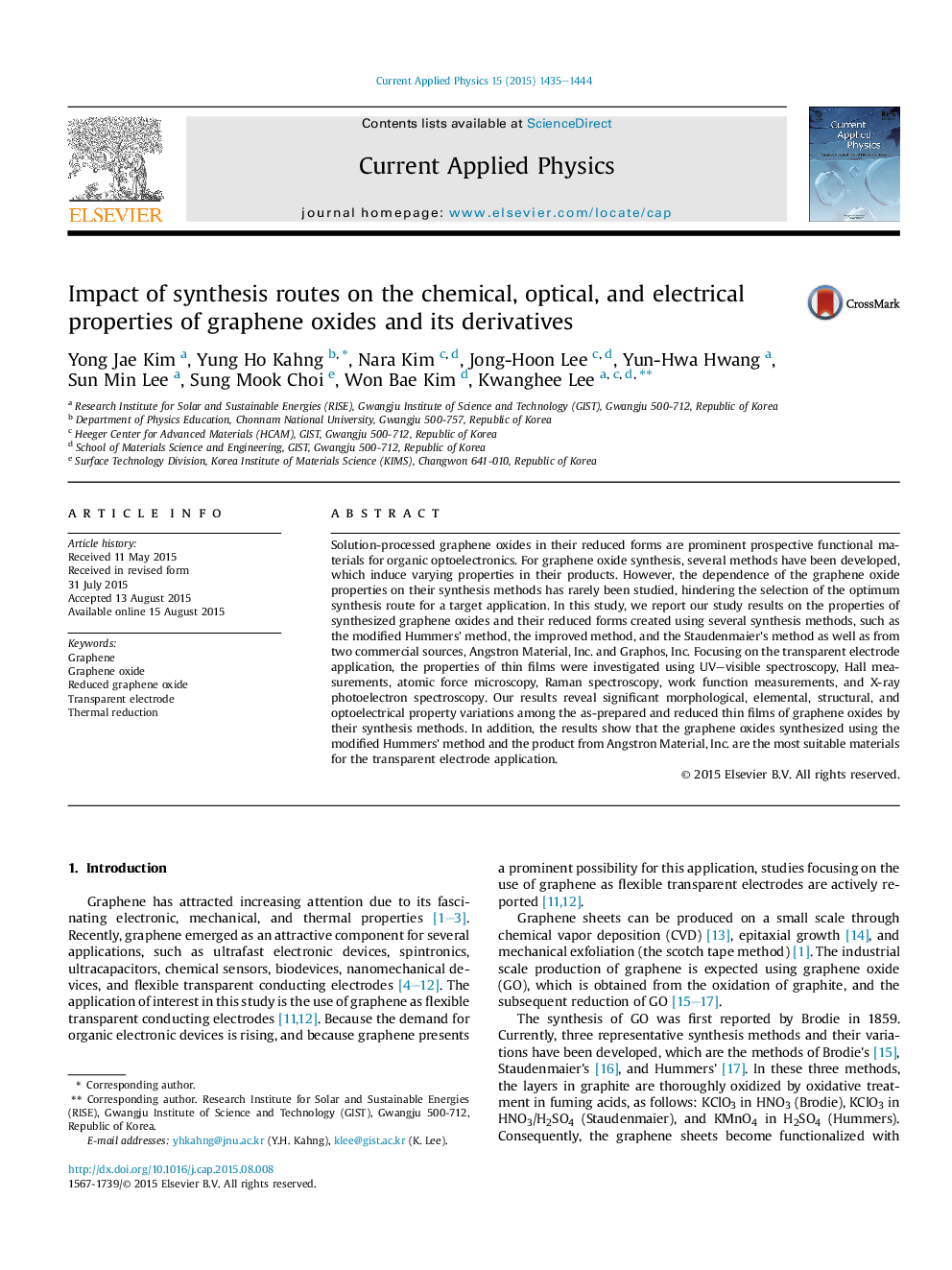| Article ID | Journal | Published Year | Pages | File Type |
|---|---|---|---|---|
| 1785410 | Current Applied Physics | 2015 | 10 Pages |
Abstract
Solution-processed graphene oxides in their reduced forms are prominent prospective functional materials for organic optoelectronics. For graphene oxide synthesis, several methods have been developed, which induce varying properties in their products. However, the dependence of the graphene oxide properties on their synthesis methods has rarely been studied, hindering the selection of the optimum synthesis route for a target application. In this study, we report our study results on the properties of synthesized graphene oxides and their reduced forms created using several synthesis methods, such as the modified Hummers' method, the improved method, and the Staudenmaier's method as well as from two commercial sources, Angstron Material, Inc. and Graphos, Inc. Focusing on the transparent electrode application, the properties of thin films were investigated using UV-visible spectroscopy, Hall measurements, atomic force microscopy, Raman spectroscopy, work function measurements, and X-ray photoelectron spectroscopy. Our results reveal significant morphological, elemental, structural, and optoelectrical property variations among the as-prepared and reduced thin films of graphene oxides by their synthesis methods. In addition, the results show that the graphene oxides synthesized using the modified Hummers' method and the product from Angstron Material, Inc. are the most suitable materials for the transparent electrode application.
Related Topics
Physical Sciences and Engineering
Physics and Astronomy
Condensed Matter Physics
Authors
Yong Jae Kim, Yung Ho Kahng, Nara Kim, Jong-Hoon Lee, Yun-Hwa Hwang, Sun Min Lee, Sung Mook Choi, Won Bae Kim, Kwanghee Lee,
